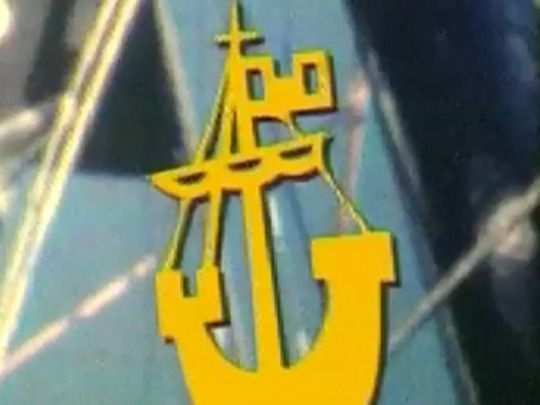
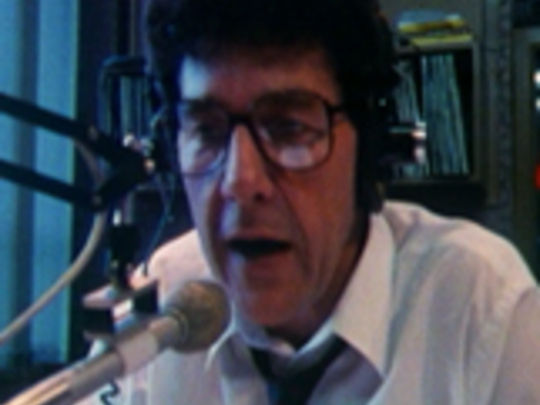
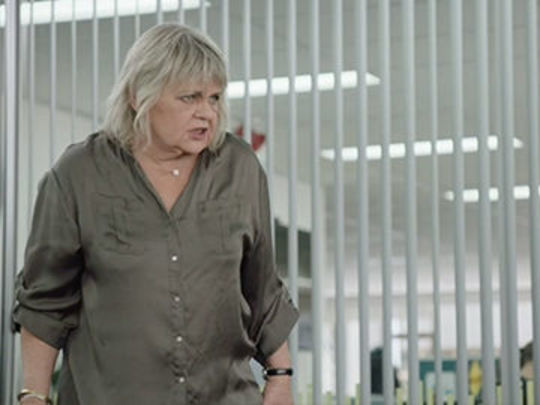
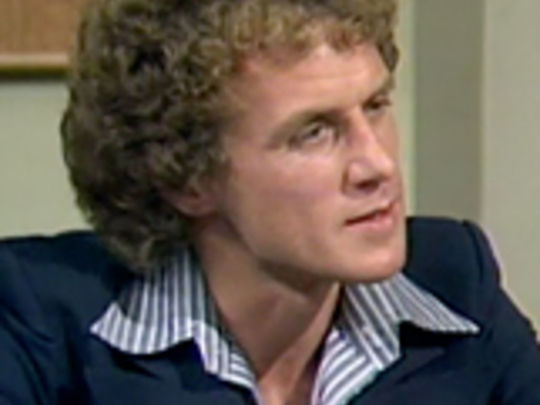
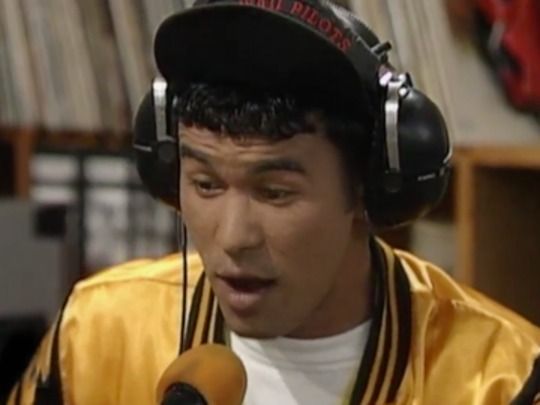
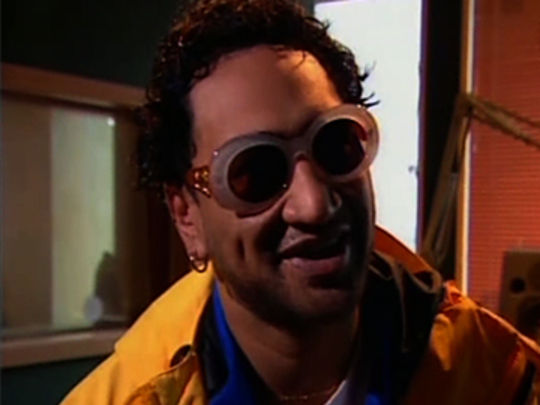
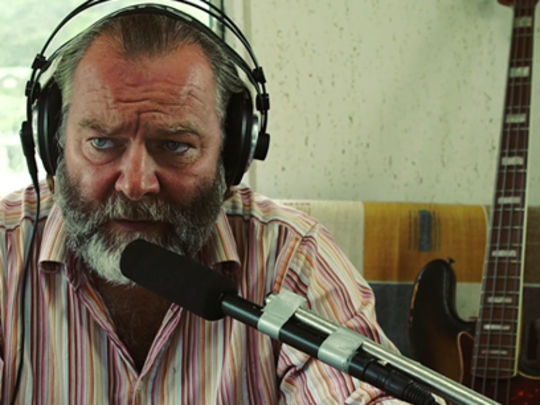
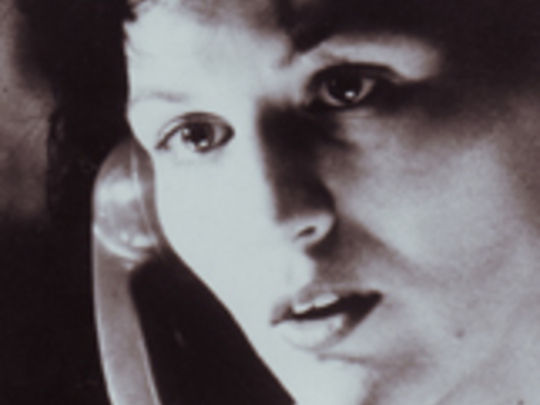
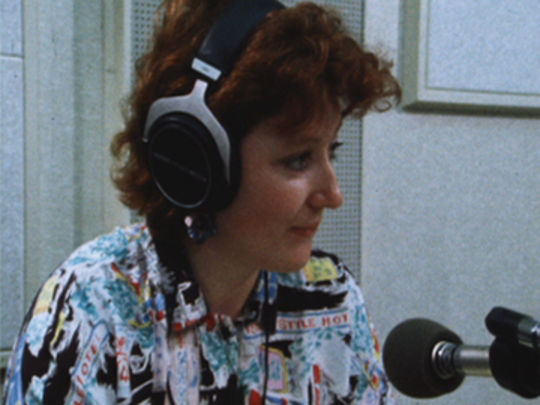
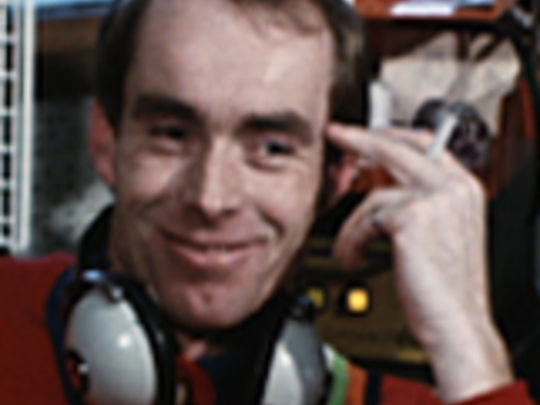
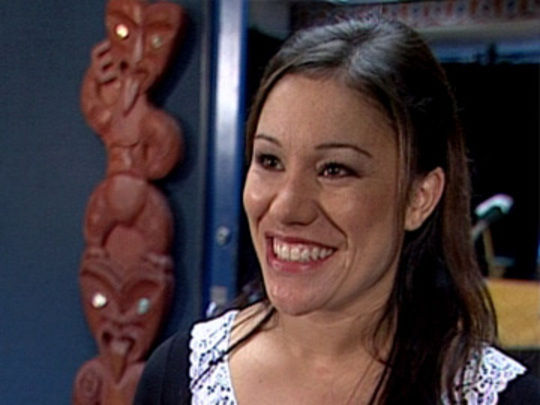
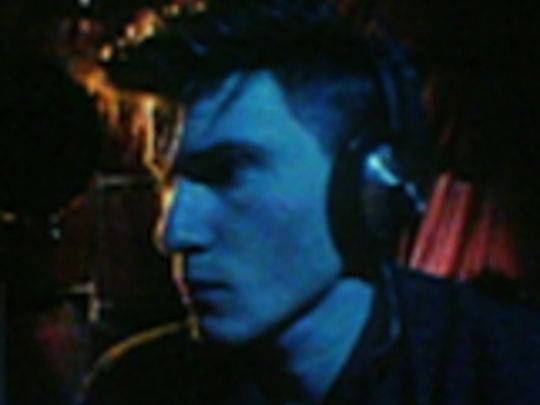
The Radio Collection
The Radio Collection
This collection has two backgrounds:
Radio Times
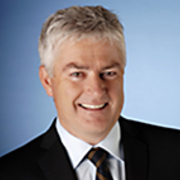
We Have Done Some Silly Things

Radio Times
By Mark Leishman 13 Feb 2024
Radio still has a firm hold on the ears of New Zealanders. Almost three and a half million people switch on their car radio, phone app, Tivoli or humble transistor every week, to listen to what's on offer from more than 100 stations around the country.
My first memories of the joys of the wireless go back to the early 60s, listening to children's stories on National Radio — which still play every Sunday morning today. These were the pre-television days when radio was the great communicator, offering immediate news, fairly staid announcers, sober and serious music and, of course, soap operas. It was magical though. In simpler times, those mysterious voices coming out of the stereogram, valve radio or crystal set had a sophistication and a mystery which intrigued.
I remember us sitting around the radio, listening to Australian soap Dr Paul or comedy Life With Dexter. In fact that memory was so strong, the name Dexter became synonymous with my beloved Labrador on TV series Wonder Dogs, a name I borrowed after listening to a classic episode of Life With Dexter on 2ZB, while driving home one night from the Avalon TV centre.
As a teenager in Timaru, I always had the radio on while swatting for School Certificate. Warning: this can affect your results! Back in the 70s, the AM waves would bounce across the Tasman, and you could pick up radio stations up and down the east coast of Australia. You could also pick up the big Auckland stations: the likes of Hauraki with Fred Botica, Radio i with Murray the I (Murray Inglis), and provincial stations like 2ZW in Whanganui, where my brother Phillip began his on air career. For a boy in Timaru, radio provided exciting links to a big wide world.

Mark Leishman in his first radio job: Radio Lakeland in Taupō.
Speaking of Phillip, my older sibling by five years got the passion for radio first, and steered me in a similar direction. We even set up a radio station in a downstairs bedroom. No transmitter, so the audience was just me and him. We had a record player and a reel-to-reel tape machine. It was pretty rumpty. Big brother Phil did all the fun DJ stuff...I was allowed to read news and weather, ironically something I do to this day.
What brought those memories back to me was a fossick through the radio titles on NZ On Screen. If you want to get a feel for what it was like back then, try Radio Waves. This was a soap based at a failing Auckland radio station, starring Grant Bridger and Andy Anderson as a couple of rebellious jocks. It is a fantastic time capsule of the 70s, with many exteriors shot around Auckland; a time when playing 45’s on turntables, and using cartridge tapes was the latest in hi-tech.
There are also some great interviews on NZ On Screen, including a younger Paul Holmes and legendary breakfast host Dave Mahoney. Holmes is interviewed in his studio for a TV show, puffing away on a cigarette and brushing the afro haircut off his forehead. Smoking was ubiquitous for radio announcers. It was one vice I didn’t get hooked onto, but I do recall having to clean away all the previous announcer's butts at my first station, Radio Lakeland. Mind you, back in those days you could smoke in your hospital bed, and there was a smokers' section on international flights. There are also fantastic documentaries on the Hauraki pirate radio years, the ratings race, and student radio.

DJ Paul Holmes at Wellington radio station 2ZM, in 1975.
My personal radio journey really began when I learned the ropes at the Radio NZ training centre. If you passed the course, a man called Jack Gardiner decided your fate. He would place you in a provincial radio station. It could be Greymouth, Timaru or Napier. In my case it was Taupō, a small station perched atop the hill heading north out of Taupō. The studio had one of the best views of any studio I’ve worked in, looking right down the Great Lake. It was also next to a small farm. One morning the cows got out and were munching on the station garden. It was early in the morning breakfast show, so I had to put on a long record — like a 'Hey Jude' — and go out to try and shoo the cattle back into their paddock. That was not part of the training course.
Working in radio in those days meant regular moves around the country, as you gained experience. From Taupō, I DJ'ed briefly in New Plymouth before a wonderful two years in Nelson, the same in Hastings, then to Wellington and finally Auckland. I worked for a range of stations, including The Breeze and Magic.
I spent the next three decades combining a radio career with television, but radio always draws you back. Perhaps it's that old saying, having a good face for radio!
The core of the job is communication and connecting with your audience. And there's nothing quite like the feeling when you make that connection, and trigger a memory of experience with your listener. When I began, it was more about pronunciation and clear diction. Now it's about relatability with that audience. And despite merchants of doom in the late 70s suggesting video would kill the radio star — or 40 years later, that Spotify would do the same — it seems there is still a big place in the heart of many New Zealanders for radio.
The technology has changed in an extraordinary way. No more rustling through sleeves of 45s in the station record library; now the music is on a hard drive, instantly accessible. The days of rifling through newspapers or magazines for content are gone, with the internet providing information and audio on artists and songs, plus the latest news and weather. Great audio can instantly be downloaded and edited in bite-sized grabs.

Mark Leishman at Radio Lakeland, in 1979 or 1980.
But the best content is often personal. Minor observations by the announcer can be a gift which allows the audience to relate to you. It may be a song that triggers a memory, which the audience picks up on and engages with, or a trivial thing like favourite ice cream flavours from our childhood. Plus, the once reticent Kiwi listener is now much more comfortable featuring on air. Social media and especially texting have allowed the listener to provide instant feedback — not all of it positive or kind. And now you can 'voice-track' or record your voice links in advance, and edit out any annoying mistakes or irrelevant ramblings.
A small number of Kiwi stations are always live, including Newstalk ZB and RNZ National. As the national broadcaster, RNZ has to be ready to instantly react to any major events that happen in New Zealand. That's where I find myself these days: working as a kind of locum, filling in as a news presenter or programme host.
It has been full circle for me, starting out with the old RNZ commercial network (which was sold and later became part of NZME), and now working at the non-commercial RNZ National. Working with passionate radio people who always have their audience at front of mind; finding compelling people and their stories, and promoting the arts, ethnicities and events that make Aotearoa New Zealand such a fascinating place.
As I look back over the decades, I recall how I once never imagined radio could be a lifetime vocation. So I decided to study journalism at Wellington Polytechnic, figuring I would do a couple of years in radio, then get a real job. How wrong can a young person be. Forty-seven years later, radio has proven to be more than a vocation. It is a job where you are forever learning, that you never quite master. And Aotearoa, with more radio frequencies than any other country in the world, does it very well.
- Mark Leishman's long career has seen him working in radio, and hosting and/or making a number of beloved television shows, including Top Town and Tux Wonder Dogs.
We Have Done Some Silly Things
By Matt Heath 13 Feb 2024
Radio is the best. My media career began with Back of the Y Masterpiece Television (watch season one here), a shocking show that my friends from high school and I made for TV2. It was simultaneously an enjoyable and painful experience. Television involves sets, lights, actors, scripts, crews, trucks, catering, locations and — in the case of our stunt-based show — many injuries. Each night, I would climb into bed, bloody and bruised, then sit up late, stressed about the logistics of what we were shooting the next day.
When through a series of lucky incidents I ended up in commercial radio, I was stoked to find it needed none of those things. In radio someone has an idea, you turn on the mic, you deliver it, and you move on. It’s immediately rewarding. Better still, your audience is right there. You talk to them, and they talk to you. Of course, these days, radio includes video, social media, and other digital content. But that ‘get it done now and move on’ attitude is baked into the industry. It's dynamic, scrappy, social and rapid. We are high-speed content-creating machines.

Radio Hauraki in the early days, as seen in Rock the Boat.
In the late 1960s, the New Zealand government controlled and operated all our radio stations. That was until a group of young Kiwis bypassed the law, by sailing out into international waters and broadcasting back to shore. Their marine-based station was named Radio Hauraki, and it changed New Zealand forever. Hauraki gave a nation hungry for rock and roll and rebellion what they wanted: it became hugely popular. After two shipwrecks and one death, the government backed down, and commercial radio came to be. For a complete telling of how the channel began, watch documentary Rock the Boat: The Story of Radio Hauraki 1965 to 1970.
In 2010 the legendary shock jock Iain Stables was hired by Radio Hauraki. Then a huge piece of luck (for me at least). En route, he got into a stoush with a Jetstar employee at Auckland Airport. I am not sure why this happened, but Stables was blamed for the incident, and lost the job before it even started.

Jeremy Wells and Matt Heath, in a Radio Hauraki publicity shot.
At the time, I was working as a producer at Great Southern Television and, for the last six months, had been delivering a half-arsed breakfast show on student radio station bFM. I must have delivered at least one decent voice break [Editor: when the DJ talks between playing songs] because Hauraki executives Mike Regal and David Brice heard me, called and offered me Stable’s gig. At the time, I had dreams in TV and film I had yet to fulfil. So I briefly ummed and ahhed, then remembered we'd just had a baby and needed the cash. I signed on immediately.
Radio Hauraki was an intimidating place when I started. It had a macho reputation and a storied history. Karyn Hay recently shared a story about her first day at Hauraki in 1979. She arrived at the station, was introduced to the staff, then told there was a meeting in the boardroom she needed to attend. A huge line of cocaine awaited her on the table. She was handed a rolled-up note and told, ‘Welcome to Hauraki’. Coincidentally she went on to host Radio With Pictures, a perfect cross between radio and TV. Thirty-something years after Hay began I started at Hauraki, and things were different. Well actually, not that different. I didn’t get the boardroom invite, but it is still a party industry. Our office is basically a beer fridge.

Radio Hauraki DJs Laura McGoldrick, Jeremy Wells and Matt Heath, with Dave Dobbyn.
What I immediately loved about the job at Hauraki was the freedom. Everything you want to do, no matter how stupid, you are encouraged to do so long as it entertains. Over the years, we have done some silly things. We made international headlines with our 'Thank You for Your Honesty' segment, a juvenile piece which ended with us asking John Key if he wees in the shower. One time, I nearly killed a man with a T-shirt canon. Recently, we broadcast all day from a bathroom to raise awareness for bowel cancer.
We have travelled the world, delivering shows from Chicago, Memphis, Las Vegas, Los Angeles, Denarau, Brisbane, Paris, London, Bangalore, and Honolulu. You need very little gear to broadcast radio. Sometimes it's just an iPhone. In Bangkok, we offered $10,000 to a listener if they could last three rounds against a professional kickboxer without getting knocked out. He did, but only just. You can watch my Hauraki colleagues Mike Minogue and Jason Hoyte’s take on commercial radio on their excellent show Talkback here.
Radio remains strong while other legacy media struggle, because it’s immediate, cheap to produce, and the audience can do other things while they listen. They can drive, work, exercise. As we move into the future, our Matt and Jerry podcasts have been so successful because we were already recording chat into mics long before they became a thing. It’s more fun and easier to access our audio than ever. Radio is the best. I love it.
- After surviving Back of the Y, Matt Heath and Chris Stapp reimagined their singular blend of parody and stunts for 2007 feature The Devil Dared Me To. Heath is also part of company Vinewood Motion Graphics and does podcasts both with the Alternative Comedy Collective, and fellow Radio Hauraki DJ Jeremy Wells.